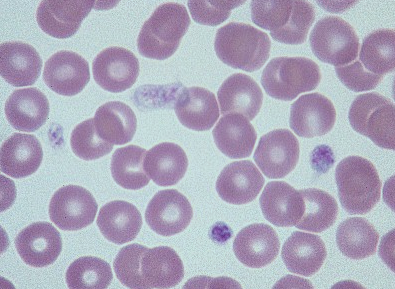Low platelet count in dogs is a medical disorder referred to as thrombocytopenia. The platelets are manufactured in the bone marrow and then passed on into the blood. Platelets are blood vessels which play a vital role in clotting of blood after the blood vessels’ lining has been injured. They are also essential in the maintenance of hemostasis. Decrease in the quantity of platelets to very low levels can increase the risk to bleeding and bruising. When the platelet count in dogs in lower than 40,000 per microliter of blood, then they are very vulnerable to sudden bleeding.
Low platelet count in dogs can occur at any age and can affect any breed as well as both the genders. There are many ways to treat this condition. Most instances of low platelet count in dogs have a positive prognosis, unless the disorder is severe.

Symptoms of low platelet count in dogs
Some of the signs and symptoms of low platelet count in dogs are listed below:
- Fever
- Epistaxis or nose bleeds
- Heart murmurs
- Urinary bleeding
- Formation of tiny reddish spots on the gums, the sclera or the white section of the eyes, or on the skin.
- Increased coughing
- Fatigue or lethargy
- Blood in stool
- Increased nasal mucus
- Ecchymoses or bruises on the dog’s skin
- In severe cases, the affected dog may faint or collapse
Causes of low platelet count in dogs
Low platelet count in dogs can be caused due a variety of factors such as:
- Leukemia
- Severe loss of blood due to a hemorrhage
- Lymphoma
- Lowered production of platelets. A condition of the bone marrow can be a cause of reduced platelet production
- The presence of infectious diseases in dogs can result in excessive destruction of the platelets, eventually leading to low platelet count in dogs. The immune system can also be responsible for premature destruction of the platelets.
- Low platelet count in dogs can also be caused when the rate of platelet consumption exceeds the rate at which it is manufactured by the bone marrow.
- Storing or sequestration of platelets in the various organs
It may be noted that the extent of bleeding which accompanies low platelet count in dogs is dependent on the severity of the fall in the platelet numbers. Typically, bleeding tends to increase with an increase in the fall of platelet count.
Diagnosis of low platelet count in dogs
There are many tests that need to be carried out to detect the presence of low platelet count in dogs and to rule out other conditions. Some of these tests are listed below:
- A through physical inspection and examination of medical history. The vet will ask questions of drugs administered to the dog or about previous vaccinations.
- Serum biochemistry tests will aid in the evaluation of anomalies in other body systems. It will also help check the overall health.
- A CBC which includes count of the platelet numbers. It will also help to detect anemia which may be caused by bleeding.
- Urinalysis to check for loss of protein, hematuria, or infection. These complications can occur due to the low platelet count in dogs.
- Special tests to check for the presence of infectious conditions such as ehrlichiosis or Rocky Mountain Spotted Fever which are passed via ticks.
- Abdomen or chest x-rays to detect the occurrence of cancer, infections, or other diseases which may be related to low platelet count in dogs
- Lab analysis of a sample obtained via bone marrow aspiration. This test is carried out to ascertain the presence of bone marrow cancer, or when there is a doubt that the bone marrow is not producing sufficient platelets.
- Tests to determine the functionality of the immune system.
- Different tests of coagulation. Clotting anomalies present across the body can result in excessive consumption of platelets.
Treatment of low platelet count in dogs
Treatment of low platelet count in dogs is dependent on the underlying cause of the condition. It may be noted that only the underlying cause can be treated, unless the pet is also suffering from bleeding. After the pre-existing disease has been cured, the platelet count will return to normal.
- Antibiotics are given till the test results for evaluating the presence of infectious diseases are available.
- Corticosteroids are administered to prevent the adverse actions of the immune system
- Low platelet count in dogs cannot be sufficiently increased via blood transfusion as the transfused platelets tend to last for only a few days. Anemia or dangerous instances of hemorrhage caused by low platelet count may require whole blood transfusion.
Prevention and home care
- As tick bites are responsible for low platelet count in dogs, pet owners must regularly check the dogs for ticks and use tick preventives.
- Remove all possible causes or injury or bleeding from the house. Give all the medications as prescribed by the vet
- Immediately take you dog to the vet if you see the symptoms of low platelet count in dogs, again.
